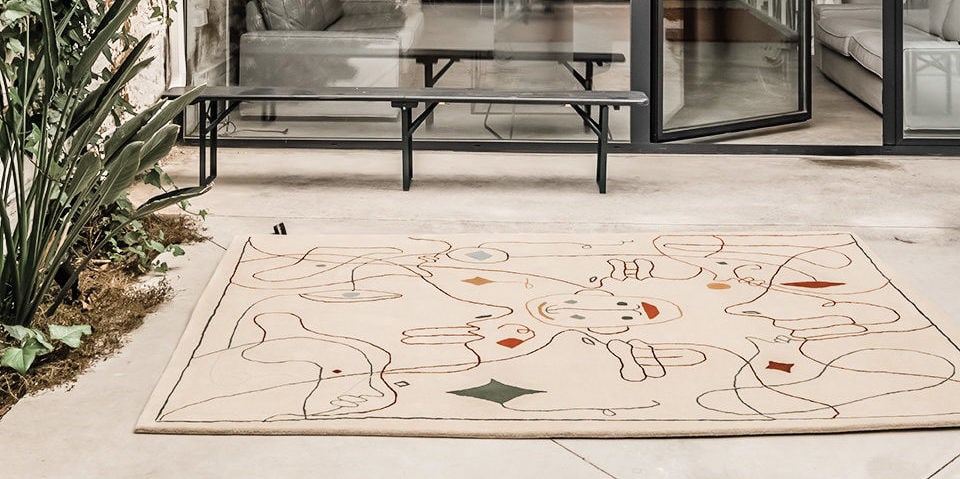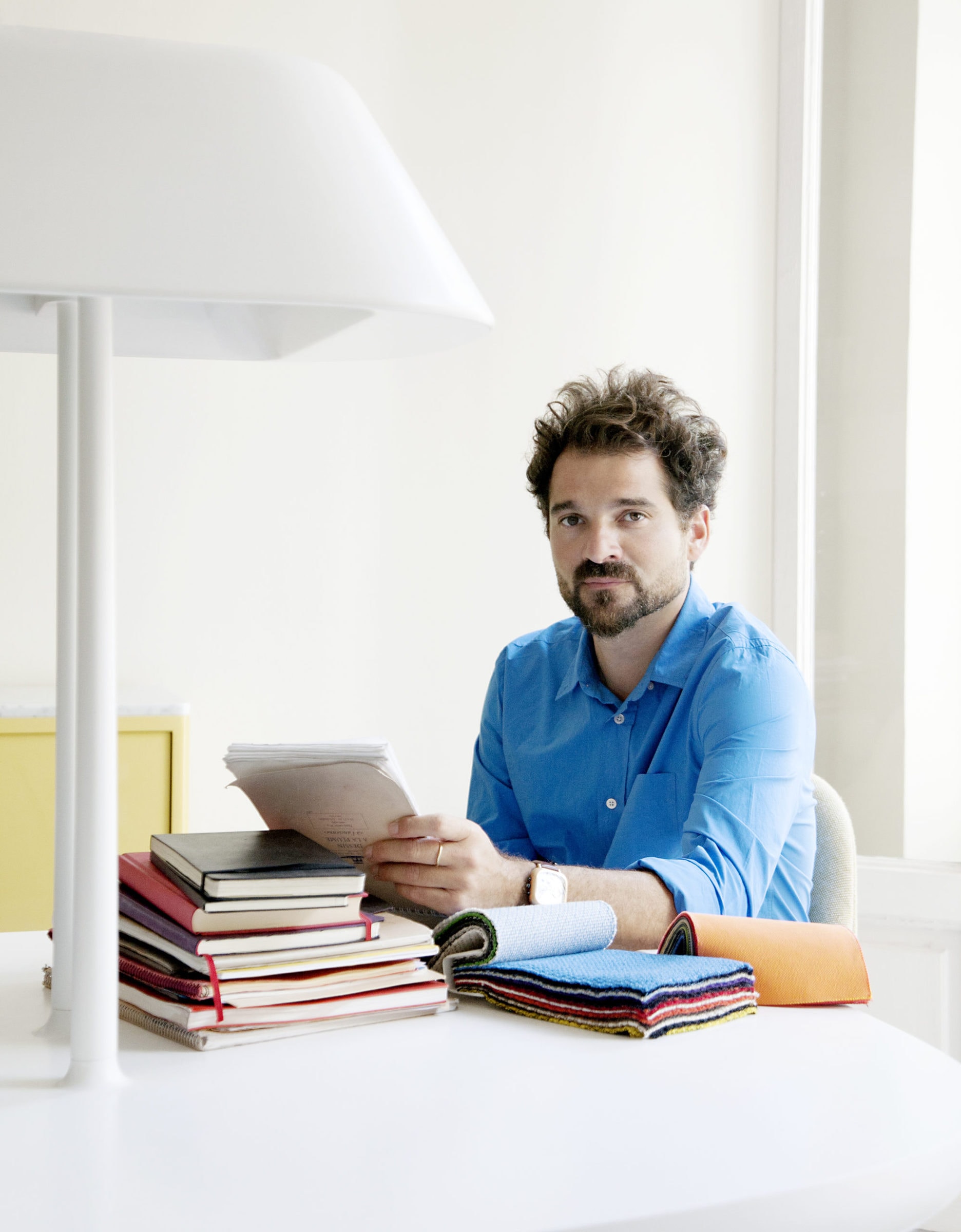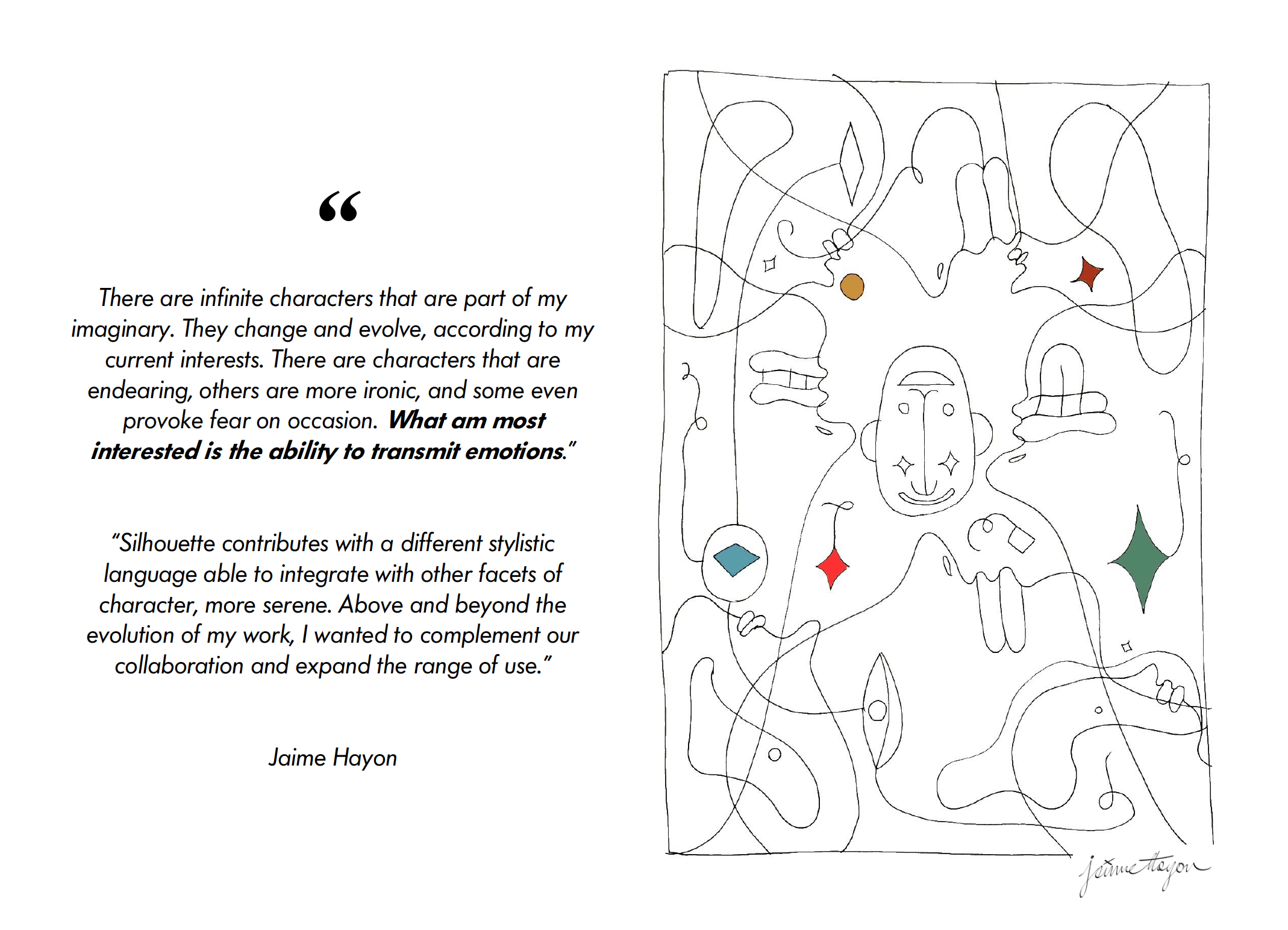Camaleonda
The Camaleonda system, originally designed by Mario Bellini in 1970, makes its comeback 50 years later. Speaking a contemporary language, between structural solutions and sustainable choices.
THE HISTORY: 50 YEARS THAT HAVE NOT GONE BY
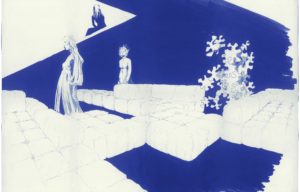 Presented to the public in 1970, Camaleonda has passed through 5 decades of design history as a true icon. Designed by Mario Bellini, this modular sofa has designed the aesthetics of an entire era of interior design, thanks to its great success both in terms of the public and critics. It is constantly featured in most international design museums and in film-sets that have defined the collective imagination. An Object that is loved by design affectionates, antique dealers and interior designers alike is finally back in production after a careful design process that involved the close collaboration between B&B Italia’s Research & Development Centre and Mario Bellini.
Presented to the public in 1970, Camaleonda has passed through 5 decades of design history as a true icon. Designed by Mario Bellini, this modular sofa has designed the aesthetics of an entire era of interior design, thanks to its great success both in terms of the public and critics. It is constantly featured in most international design museums and in film-sets that have defined the collective imagination. An Object that is loved by design affectionates, antique dealers and interior designers alike is finally back in production after a careful design process that involved the close collaboration between B&B Italia’s Research & Development Centre and Mario Bellini.
Mario Bellini’s work is characterized by bringing together design and architecture and Camaleonda testifies to his unique ability to move confidently between diverse design languages, between macro and micro, geometry and curves, artificial and natural materials. As Bellini himself says, Camaleonda was created to fill a void: “At the beginning of the 1970s, upholstered furniture for the home stagnated into the tired traditional stereotypes and radical-proactive elitist forays into the future that, although stimulating, rarely challenged the relationship between the evolution of new patterns of behavior in the home and the types of furniture available on the market at the time.”
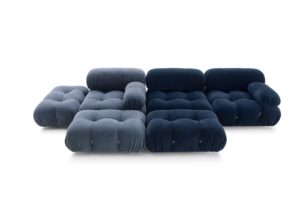 With Camaleonda we find ourselves in the presence of a sofa intended as an architectural element, capable of transforming the landscape of the interior space that inhabits. A landscape that is neither immobile nor permanent, as its chameleon-like nature involves change and transformation. A promise that is clear from the name itself, as Bellini recalls: “Camaleonda is a name that I invented 1970 by mixing two words: the first is the name of an extraordinary animal, the chameleon (camaleonte in Italian), that can adapt to the environment around it and the word ‘onda, wave, that indicates the curve of the sea and the desert. Both these words describe the shape and function of this sofa.”
With Camaleonda we find ourselves in the presence of a sofa intended as an architectural element, capable of transforming the landscape of the interior space that inhabits. A landscape that is neither immobile nor permanent, as its chameleon-like nature involves change and transformation. A promise that is clear from the name itself, as Bellini recalls: “Camaleonda is a name that I invented 1970 by mixing two words: the first is the name of an extraordinary animal, the chameleon (camaleonte in Italian), that can adapt to the environment around it and the word ‘onda, wave, that indicates the curve of the sea and the desert. Both these words describe the shape and function of this sofa.”
Camaleonda continues to live on thanks to an identity that has become an evergreen iconic vintage, current for each generation precisely because of its timeless qualities.
THE PRESENT: A CONTEMPORARY REISSUE
In its reissue, Camaleonda preserves the elements that have made it a contemporary classic. By mutual agreement, Mario Bellini and B&B Italia have decided to keep with the 90×90 cm seat module, together with the backrest and the armrest, faithful to the original project, whose original cutting pattern was used for the new edition.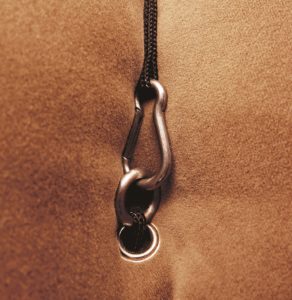
The generous polyurethane padding that forms the characteristic capitonné design remains unchanged, still manufactured with the innovative system of cables, hooks and rings created by Bellini in 1970, which defines the characteristics look and modularity. Thanks to the tie-rods and the rings, the modules can be unhooked and recombined at will, allowing the sofa to adapt to an evolving taste and the dynamic needs of those using it.
The fundamental characteristics of Camaleonda is its unlimited modularity, a geometric pattern that allows each element to become a sort of enormous pixel through which to define your home environment. By hooking and unhooking seats, backrests and armrests, you can enjoy the luxury of changing your mind as many times as you desire, moving and redesigning the space. A concept which is dead to Mario Bellini: “Of all objects, I have designed, Camaleonda is perhaps the best in terms of its sense of freedom. There are infinite number of possible configurations.”
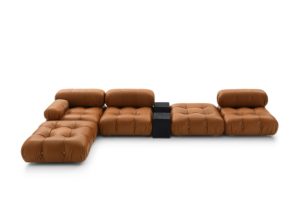 The padding has been thoroughly updated by the B&B Italia Research & Development Centre, making it even more comfortable than the original version. Thus the magical balance between the rigorous geometry of the square and the welcoming of the roundness of the padding is confirmed, further underlining the elasticity and tactile ergonomics that characterize many of Mario Bellini’s design projects. Camaleonda can be upholstered with B&B Italia’s entire textile and leather collection, allowing for another variable in the multitude of possible combinations.
The padding has been thoroughly updated by the B&B Italia Research & Development Centre, making it even more comfortable than the original version. Thus the magical balance between the rigorous geometry of the square and the welcoming of the roundness of the padding is confirmed, further underlining the elasticity and tactile ergonomics that characterize many of Mario Bellini’s design projects. Camaleonda can be upholstered with B&B Italia’s entire textile and leather collection, allowing for another variable in the multitude of possible combinations.
Camaleonda is a dynamic, alive and sincere object, not at all enigmatic, that allows for an infinite number of configurations while still maintaining its peculiar and unique identity.
THE FUTURE: SUSTAINABILITY AND CIRCULARITY
The re-edition of the Camaleonda does not look back at the past, but on the contrary, it aims to rewrite an indisputable classic in a contemporary perspective.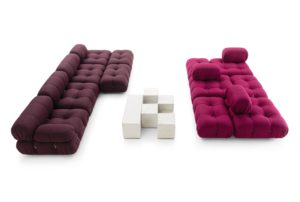
Aesthetics, dimensions, proportions, and the way it is configured remain unchanged, while the composition of the interior has been completely redesigned with no room for nostalgia. “When I was asked to update Camaleonda, it was immediately clear to me that I should never or would never be able to do anything. Change the shape? No, the way it was intended is as good today as it was then. Change the materials? Yes, and that’s why I had a conversation with a company that is a leader in terms of its ability to transform a piece of furniture into a sustainable product.”
The “sandwich” structure of the Camaleonda is made up of recycled or recyclable materials that can easily be disassembled. The seat, backrest, armrests and bases are made of wooden panels. The sofa rests on the floor on a series of spherical feet made of FSC (Forest Stewardship Council) certified beech wood.
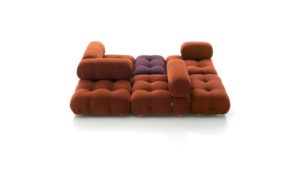 The padding of the seat, the backrest and the armrests are made of polyurethane in various levels of density and firmness. The highest degree of complexity lies in the seat, where elements are shaped and assembled to allow every layer to interact, at the same time guaranteeing a high level of comfort. The various layers generate empty spaces or pockets designed to create a comfortable spring effect.
The padding of the seat, the backrest and the armrests are made of polyurethane in various levels of density and firmness. The highest degree of complexity lies in the seat, where elements are shaped and assembled to allow every layer to interact, at the same time guaranteeing a high level of comfort. The various layers generate empty spaces or pockets designed to create a comfortable spring effect.
The engineering and composition of the seat allow the interior elements of the sofa to be disassembled and therefore easily recyclable. The padding is protected by a removable cover made of dacron, a synthetic fabric that is entirely made of recycled PET, the same material used to manufacture plastic water bottles.
THE DESIGNER: BEHIND THE DESIGN
 Mario Bellini is an architect and designer internationally renowned. He received the Golden Compass Award eight times (one assigned to B&B Italia Le Bambolein 1979) and 25 of his works are in the permanent design collection of the New York MoMA, which dedicated to him a personal retrospective in 1987.
Mario Bellini is an architect and designer internationally renowned. He received the Golden Compass Award eight times (one assigned to B&B Italia Le Bambolein 1979) and 25 of his works are in the permanent design collection of the New York MoMA, which dedicated to him a personal retrospective in 1987.
He has designed countless art, design and architecture exhibitions over the years, both in Italy and abroad: among the latest those at Palazzo Reale with Giotto’s masterpieces (2016) and – at the Milanese Museo del ‘900 – the one dedicated to Margherita Sarfatti (2018-2019).
In 2015 the Milan Triennale awarded him a Gold Medal for his career in architecture. Since 1991 he has been named as the Royal Honorary Designer of RDI.
Bellini has dedicated himself to almost entirely architecture since the 1980s. Projects currently underway are the New Polytechnic School of Genoa (2006-2020), a vast hotel and residential development on Virgin Gorda Island in the British Virgin Island (2018-2020). He also has various projects within the design stages.
ENDLESS COMPOSITIONS: GLI SCACCHI
Mario Bellini has also designed Gli Scacchi, which uses a combinatorial nature of Camaleonda to create the chess pieces. These series of accessories can be utilized to become extra tables or seats.
The three pieces that make up the series are inspired by the game of chess, in particular the queen, the knight and the rook (hence the Italian names Regina, Cavallo, and Torre), light and easy to move like on a chessboard. “They are among the most playful pieces of furniture I have ever designed”, Bellini states.
In 1971, the original version of Gli Scacchi represented a remarkable technical innovation as they were produced in self-skinning polyurethane foam, a solution which was initially used only by the automotive industry and was introduced for the first time in furniture. The 2020 reissue offers soft covers made of think leather and calf hide with visible stitching.

A classic is reborn 50 years after its introduction, maintaining all of its original character with a new dedication to a sustainable future.
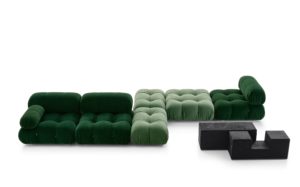
Infinitely configurable, infinitely versatile, available now for order at Urbanspace.


 Presented to the public in 1970, Camaleonda has passed through 5 decades of design history as a true icon. Designed by Mario Bellini, this modular sofa has designed the aesthetics of an entire era of interior design, thanks to its great success both in terms of the public and critics. It is constantly featured in most international design museums and in film-sets that have defined the collective imagination. An Object that is loved by design affectionates, antique dealers and interior designers alike is finally back in production after a careful design process that involved the close collaboration between B&B Italia’s Research & Development Centre and Mario Bellini.
Presented to the public in 1970, Camaleonda has passed through 5 decades of design history as a true icon. Designed by Mario Bellini, this modular sofa has designed the aesthetics of an entire era of interior design, thanks to its great success both in terms of the public and critics. It is constantly featured in most international design museums and in film-sets that have defined the collective imagination. An Object that is loved by design affectionates, antique dealers and interior designers alike is finally back in production after a careful design process that involved the close collaboration between B&B Italia’s Research & Development Centre and Mario Bellini. With Camaleonda we find ourselves in the presence of a sofa intended as an architectural element, capable of transforming the landscape of the interior space that inhabits. A landscape that is neither immobile nor permanent, as its chameleon-like nature involves change and transformation. A promise that is clear from the name itself, as Bellini recalls: “Camaleonda is a name that I invented 1970 by mixing two words: the first is the name of an extraordinary animal, the chameleon (camaleonte in Italian), that can adapt to the environment around it and the word ‘onda, wave, that indicates the curve of the sea and the desert. Both these words describe the shape and function of this sofa.”
With Camaleonda we find ourselves in the presence of a sofa intended as an architectural element, capable of transforming the landscape of the interior space that inhabits. A landscape that is neither immobile nor permanent, as its chameleon-like nature involves change and transformation. A promise that is clear from the name itself, as Bellini recalls: “Camaleonda is a name that I invented 1970 by mixing two words: the first is the name of an extraordinary animal, the chameleon (camaleonte in Italian), that can adapt to the environment around it and the word ‘onda, wave, that indicates the curve of the sea and the desert. Both these words describe the shape and function of this sofa.”
 The padding has been thoroughly updated by the B&B Italia Research & Development Centre, making it even more comfortable than the original version. Thus the magical balance between the rigorous geometry of the square and the welcoming of the roundness of the padding is confirmed, further underlining the elasticity and tactile ergonomics that characterize many of Mario Bellini’s design projects. Camaleonda can be upholstered with B&B Italia’s entire textile and leather collection, allowing for another variable in the multitude of possible combinations.
The padding has been thoroughly updated by the B&B Italia Research & Development Centre, making it even more comfortable than the original version. Thus the magical balance between the rigorous geometry of the square and the welcoming of the roundness of the padding is confirmed, further underlining the elasticity and tactile ergonomics that characterize many of Mario Bellini’s design projects. Camaleonda can be upholstered with B&B Italia’s entire textile and leather collection, allowing for another variable in the multitude of possible combinations.
 The padding of the seat, the backrest and the armrests are made of polyurethane in various levels of density and firmness. The highest degree of complexity lies in the seat, where elements are shaped and assembled to allow every layer to interact, at the same time guaranteeing a high level of comfort. The various layers generate empty spaces or pockets designed to create a comfortable spring effect.
The padding of the seat, the backrest and the armrests are made of polyurethane in various levels of density and firmness. The highest degree of complexity lies in the seat, where elements are shaped and assembled to allow every layer to interact, at the same time guaranteeing a high level of comfort. The various layers generate empty spaces or pockets designed to create a comfortable spring effect. Mario Bellini is an architect and designer internationally renowned. He received the Golden Compass Award eight times (one assigned to B&B Italia Le Bambolein 1979) and 25 of his works are in the permanent design collection of the New York MoMA, which dedicated to him a personal retrospective in 1987.
Mario Bellini is an architect and designer internationally renowned. He received the Golden Compass Award eight times (one assigned to B&B Italia Le Bambolein 1979) and 25 of his works are in the permanent design collection of the New York MoMA, which dedicated to him a personal retrospective in 1987.

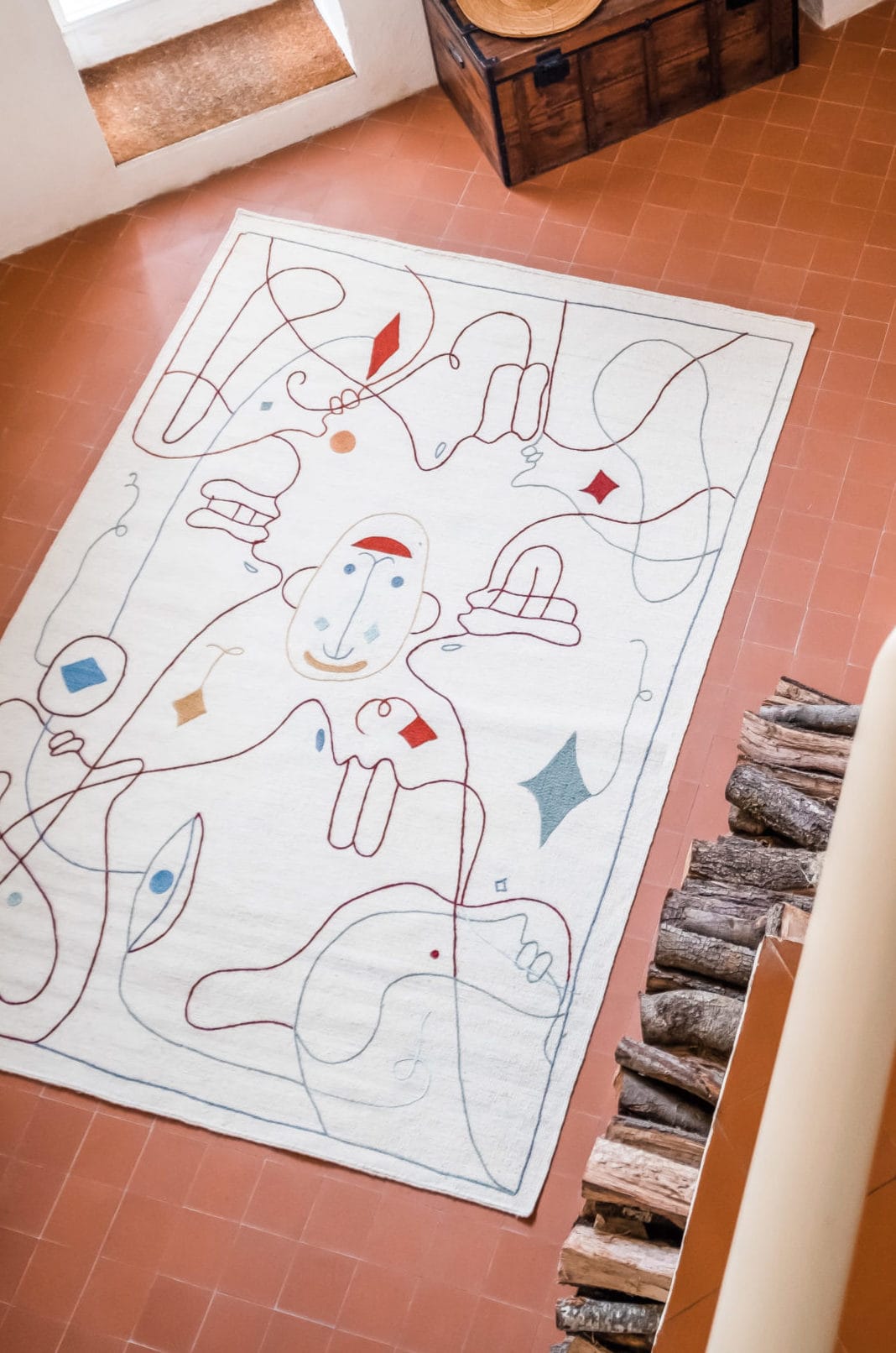 outdoor use that highlights the acclaimed casual style of the Valencian based designer and artist.
outdoor use that highlights the acclaimed casual style of the Valencian based designer and artist.